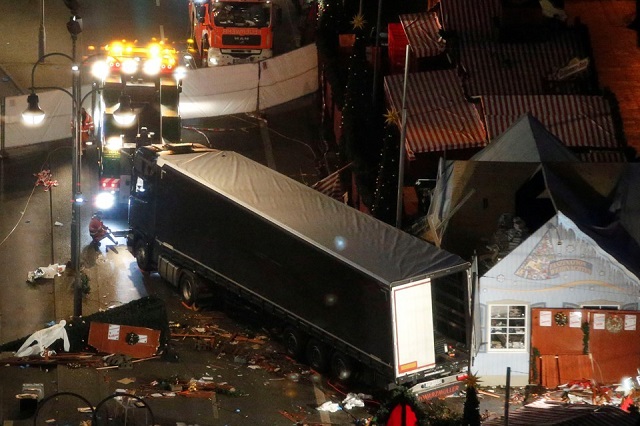
Berlin, Germany | AFP |
Tunisia said Saturday it had arrested three men linked to the suspected Berlin Christmas market attacker, including his nephew. Here is what we know about the case so far.
– Shot dead in Italy –
German authorities launched a Europe-wide manhunt for 24-year-old Tunisian Anis Amri on Wednesday. Two days later the rejected asylum seeker was killed by Italian police in Milan.
Italy’s Interior Minister Marco Minniti told reporters in Rome that Amri had been fatally shot after firing at police who had stopped him for a routine identity check around 3:00 am (0200 GMT).
Amri had been missing since escaping after Monday’s attack in central Berlin. He had links to Italy, having arrived in the country from his native Tunisia in 2011.
Amri’s temporary residence permit for Germany and fingerprints were found in the cab of the truck he allegedly rammed into the packed Christmas market, authorities said.
But in a development that stoked public anger, it emerged that German officials had already been investigating Amri.
Prosecutors in Berlin believed he was planning a burglary to raise funds to buy weapons, possibly to carry out an attack.
However, after trailing him for six months, they had to let the case drop as there was not enough evidence against him — they thought he was only a small-time drug dealer.
Questions were also raised on Friday about how Amri managed to flee Germany, evading the Europe-wide manhunt and making it all the way to Italy.
He is believed to have travelled at least part of the route by train, passing through France. He had no phone on him and only a few hundred euros.
– Rejected asylum seeker –
Amri left Tunisia after the 2011 revolution. He lived in Italy and served a four-year sentence there for setting fire to a school which had been converted into a refugee shelter.
Security sources believe Amri was radicalised during his time in prison.
He arrived in Germany in July 2015 and applied for asylum, which was rejected in June.
However, his deportation became bogged down in red tape as Tunisia denied he was a citizen.
Just an hour after the carnage, the police declared they had a chief suspect already in custody: a Pakistani asylum seeker.
Police released him 24 hours later, after failing to find evidence of his involvement.
The mix-up gave Amri another 30 hours to flee.
– The hunt for accomplices –
Federal prosecutor Peter Frank told reporters Friday that there were still many unanswered questions in the probe into Amri.
“It is very important for us to determine whether there was a network of accomplices… in the preparation or the execution of the attack, or the flight of the suspect,” he said.
After the bloody assault, the Islamic State-linked Amaq news agency hailed Amri as a “soldier” of the group.
After Amri was shot dead, IS released a video in which he is shown pledging allegiance to IS chief Abu Bakr al-Baghdadi.
Tunisia on Saturday said it had arrested Amri’s nephew and two other men who were members of a “terrorist cell” connected to Amri.
It made no direct link between the trio and the Berlin attack.
– The Polish driver –
The truck used to carry out the attack belonged to Polish driver Lukasz Urban who was heading to Berlin to deliver steel beams from Italy.
But the delivery was put off until the following day, so he went to park his Polish-registered lorry in an industrial zone in the northwest of the city, according to the Bild daily.
In the afternoon he spoke briefly to his wife and the couple agreed to talk again an hour later. They never did.
Police found Urban, shot dead, in the passenger seat of the truck’s cab. According to Urban’s cousin Ariel Zurawski, who was shown photos of the body, the 37-year-old had a stab wound and “his face was bloodied and swollen”, suggesting a struggle with the attacker.
Eleven other people were also killed, seven of them German nationals. The others came from Czech Republic, Italy, Israel and Ukraine.
 The Independent Uganda: You get the Truth we Pay the Price
The Independent Uganda: You get the Truth we Pay the Price



